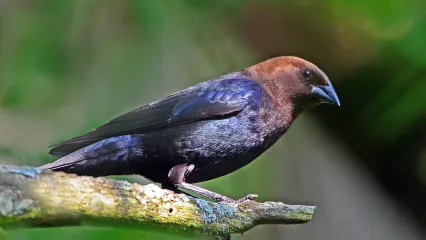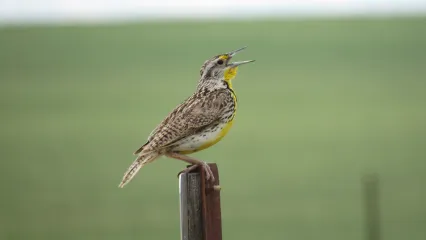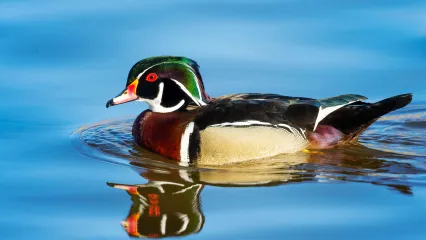
Description
This bird is a little larger than a house sparrow and has dark eyes, a cone-shaped bill, and a short, squared tail. Males have a dark brown head and iridescent, greenish-blue body plumage that usually looks glossy black. Females have brown plumage overall, with faint streaking on the light brown breast, belly and sides, and a pale throat. Brown-headed cowbirds are sometimes confused with Brewer’s and rusty blackbirds, which have yellow eyes and longer bills. Cowbirds may also look like the common grackle, which has a long, rudder-like tail.
Size
Approximately 7.5 to 8.7 inches in length. Wingspan of 14.2 inches.
Habitat
These birds can be found in agricultural and residential areas including roadsides, fence lines, campgrounds, pastures and feedlots where there are horses or cattle. Brown-headed cowbirds occur statewide.
Life Cycle
At feeders, brown-headed cowbirds eat cracked corn, milo, millet and black-oil sunflower seeds. Away from feeders, they search the ground for seeds, waste grain and insects. The nomadic brown-headed cowbird once needed an alternate nesting strategy as it followed the herds of bison across the plains. Because of this wandering lifestyle, the female cowbird was unable to attend her nest. This nesting strategy has continued to this day. Female cowbirds can lay up to 40 eggs a year in the nests of several different bird species.
How To Observe
This bird prefers to feed on or just above the ground.


